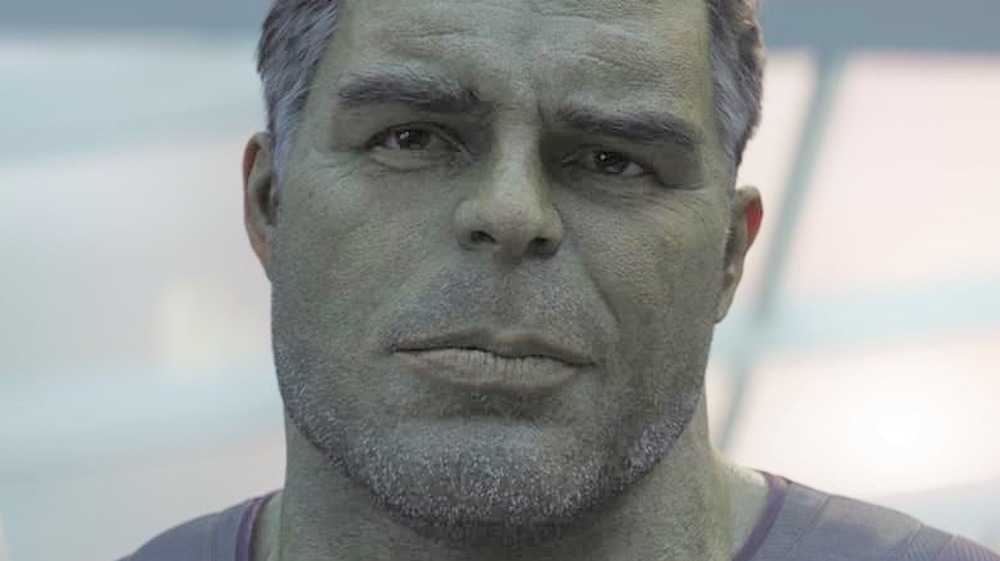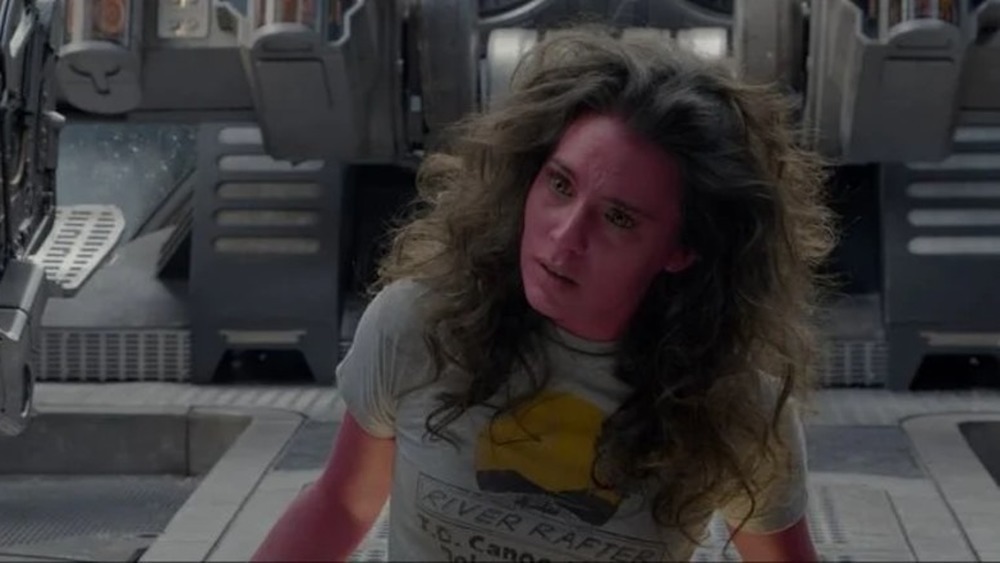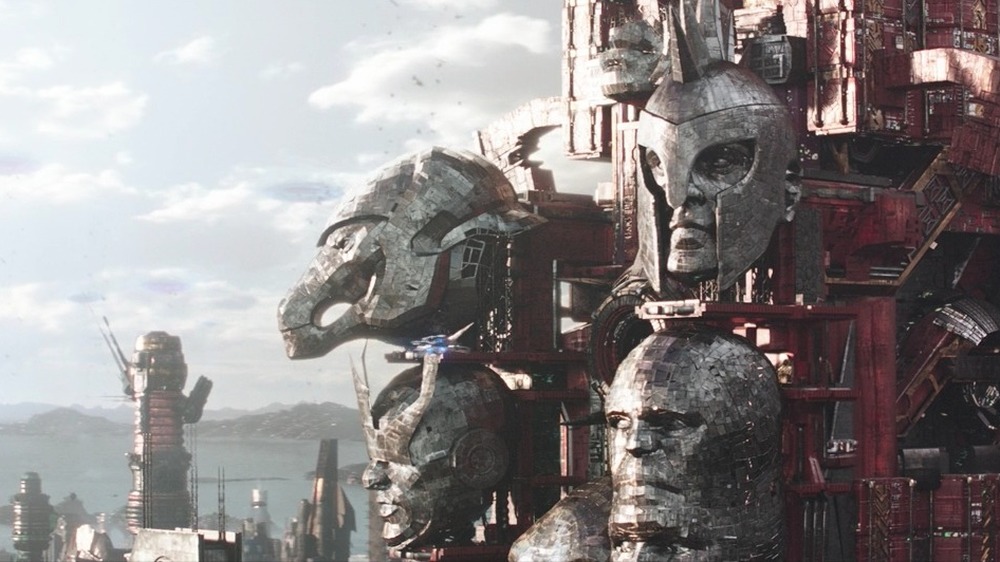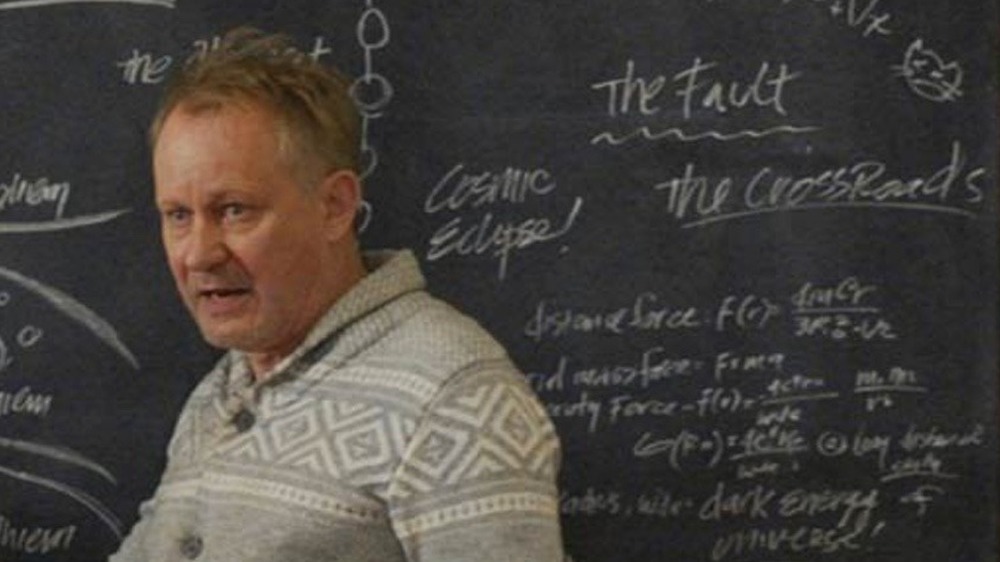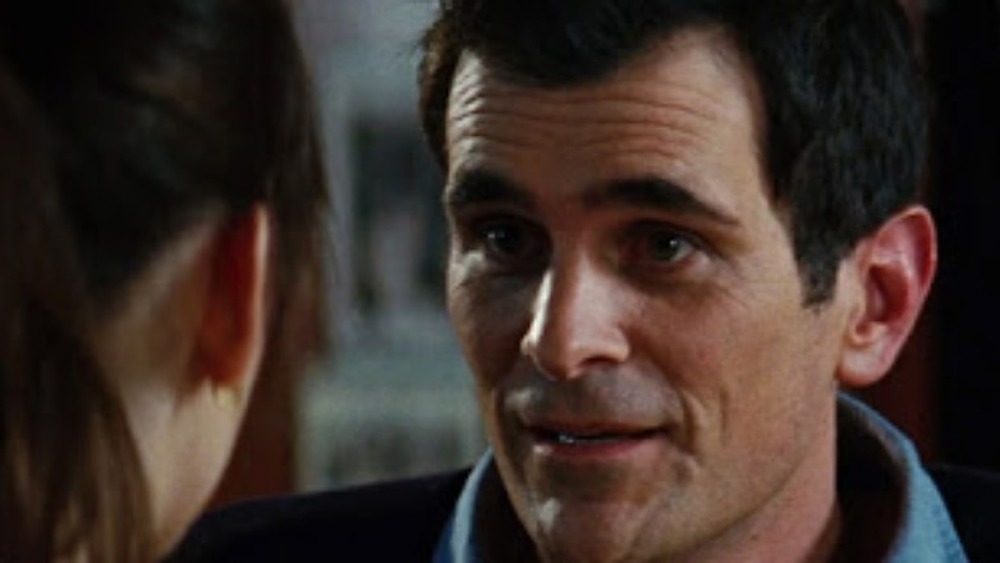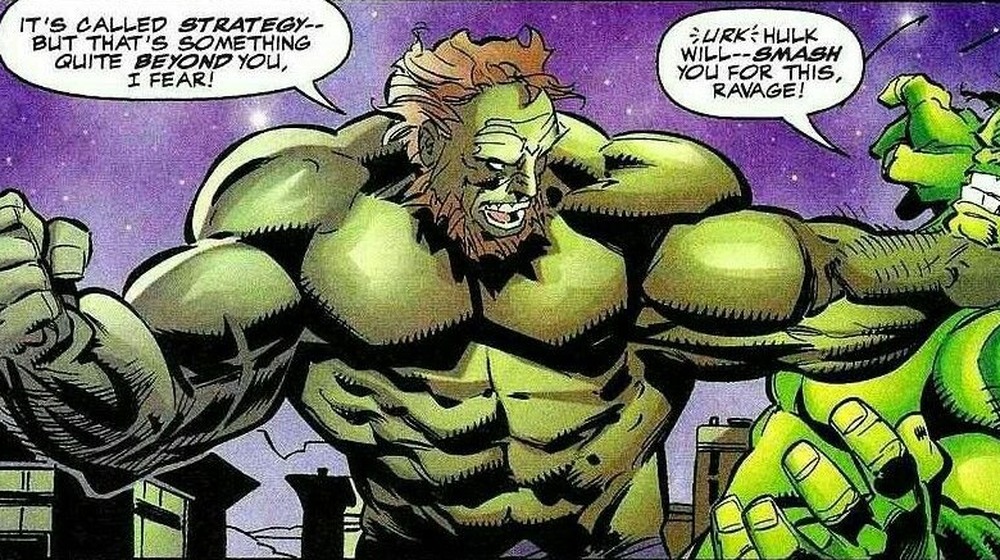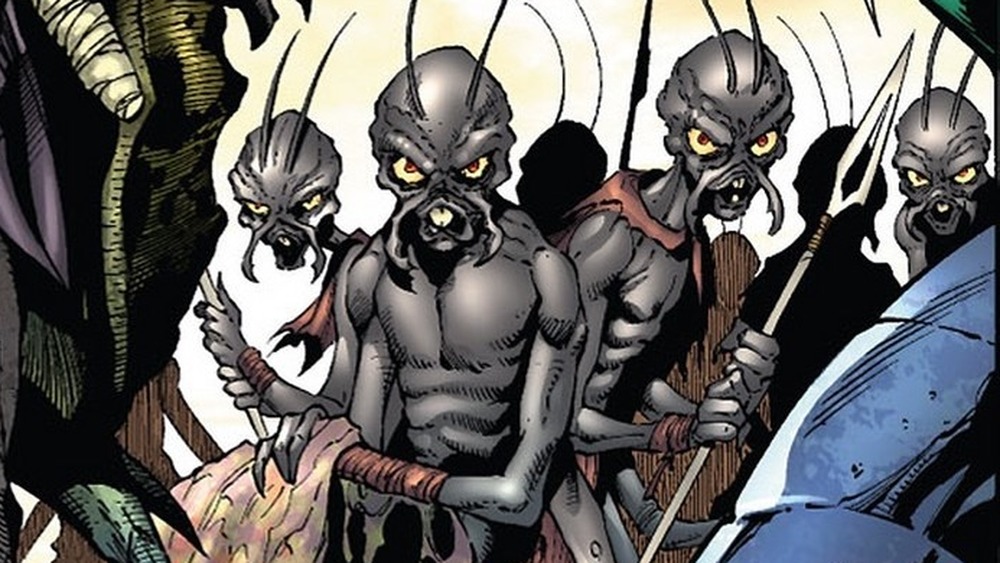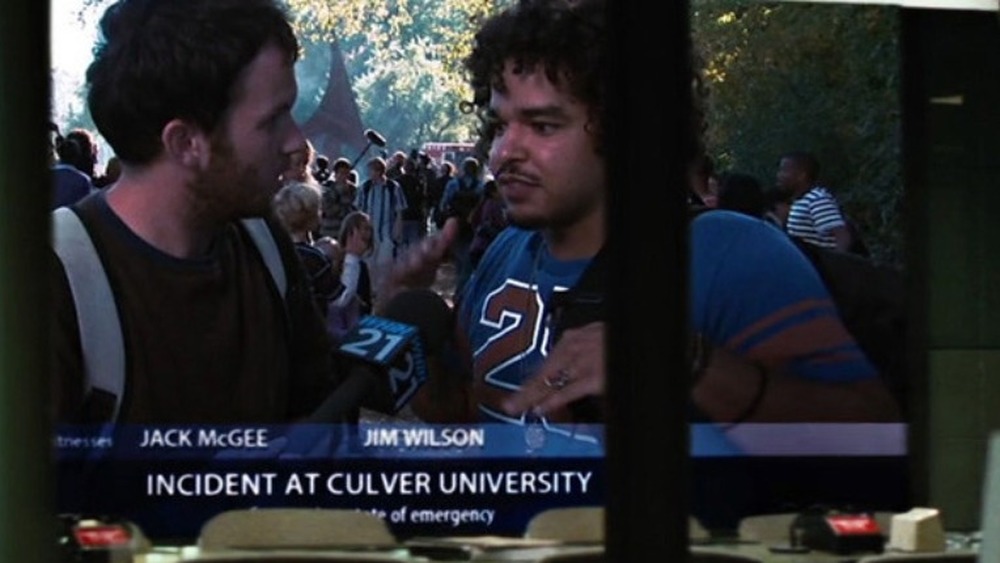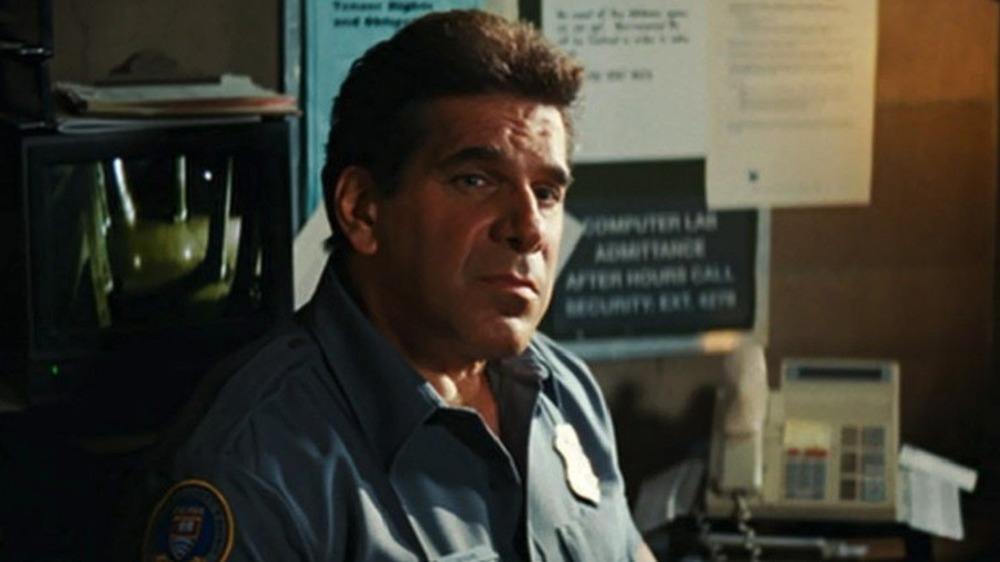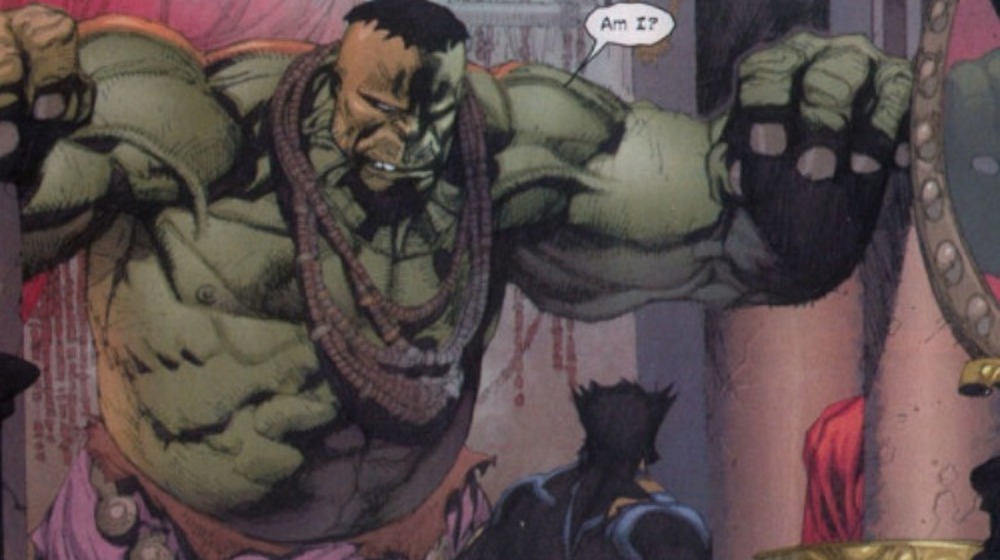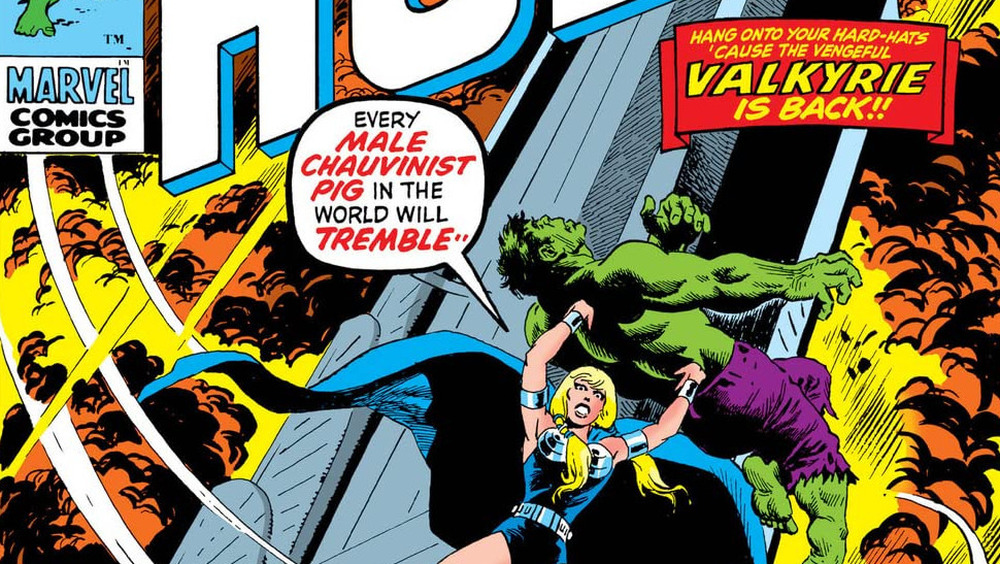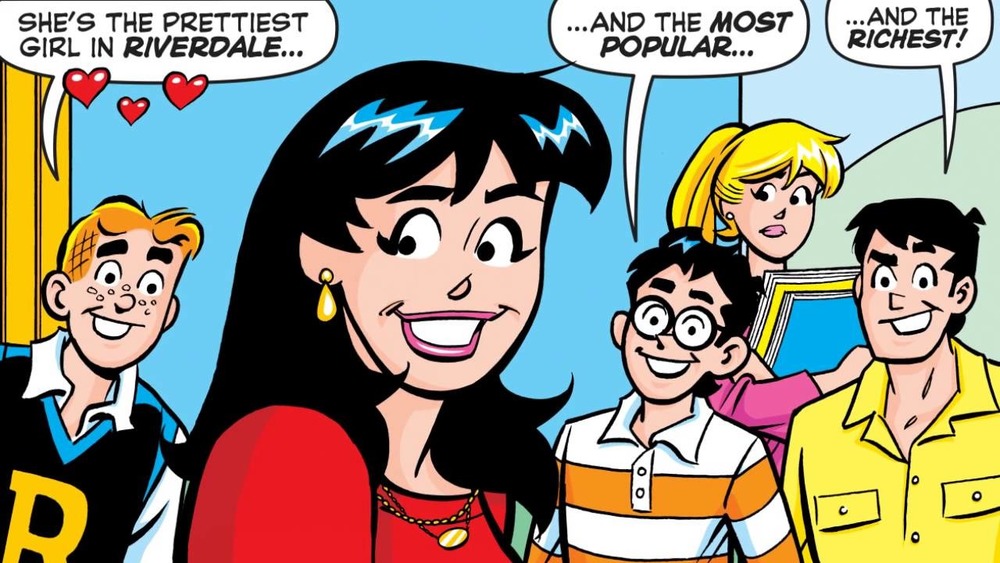The Best Hulk Easter Eggs In The MCU
Sadly, it looks like 2008's The Incredible Hulk may be the only solo movie that Marvel's green goliath will ever get in the Marvel Cinematic Universe. The good news is that the Hulk's source material can be harvested to make great movies and TV. For example, plenty of Hulk's antagonists from the comics have been used in other areas of the MCU. William Hurt's Thaddeus Ross continues to appear long after the events of The Incredible Hulk, Adrian Pasdar plays the old Hulk villain Glenn Talbot as a recurring character on the first five seasons of Agents of S.H.I.E.L.D., and even Ben Mendelsohn's Talos — the Skrull who made his MCU debut in 2019's Captain Marvel — started his fictional life as a rowdy wedding guest in 1994's Incredible Hulk #418.
Likewise, with or without another solo sequel, the filmmakers at Marvel Studios still enjoy using Easter eggs lifted directly from the Hulk's older stories. While there are plenty of these in The Incredible Hulk, there's no shortage of them in the rest of Marvel's films. Whether it's one of the Avengers films where the Hulk is featured prominently, his appearance in 2017's Thor: Ragnarok, or in movies that on the surface have little or nothing to do with the big guy, you can usually find a couple Hulk-centric references here and there.
Out of them all, here's what we count as the best Hulk Easter eggs in the MCU.
A Guardians of the Galaxy Easter egg leads back to the Hulk
Do you remember Bereet? If not, don't feel bad — Star-Lord doesn't remember her at first, and he has a lot more reasons to.
Played by Melia Kreiling in 2014's Guardians of the Galaxy, Bereet is the Krylorian who pops up on the Milano right after Peter Quill escapes Korath and his henchmen on Morag. Her appearance surprises Quill, who at first struggles to remember her name and then admits he forgot she was on board. We don't see her much after that. She answers a call from Yondu before Quill can stop her, they say goodbye on Xandar while Rocket watches, and during the final battle, she hurries a little girl to safety.
While we may never see her outside Guardians of the Galaxy, in the comics, Bereet is almost exclusively a Hulk-related character, and she has an interesting metafictional origin. She first appears in 1977's Rampaging Hulk #1 as an alien filmmaker. Rampaging Hulk was the big guy's first foray into a magazine-format comics, supported by the popularity of the live-action Incredible Hulk TV show. The original concept behind the magazine's Hulk stories is that they were untold stories of the Hulk's past. However, when too many contradictions popped up, Marvel used Bereet to fix things. In 1982's Incredible Hulk #269, Bereet makes her first appearance in the Hulk's regular comic, at which time she reveals that the events of Rampaging Hulk were actually movies she created.
Two classic Hulk villains are a part of Thor: Ragnarok's Contest of Champions
When Valkyrie first brings the captive Thor to the Grandmaster's Tower, we see the massive sculptures depicting the faces of the current titleholder of the Contest of Champions — the Hulk — as well as former champs. These are some of the most visible and obvious Easter eggs in Ragnarok, all depicting characters we've yet to see in the MCU. What you may not know is that in the comics, two of them are very Hulk-specific villains.
On the left, below the face of Beta Ray Bill, is the visage of Dark-Crawler. Originally introduced as Night-Crawler in 1970's Incredible Hulk #126, the character's name was changed presumably to avoid confusion with the more well-known Nightcrawler of the X-Men, who wouldn't show up until five years later in Giant-Size X-Men #1. In one of Hulk's most incredible feats, he destroys Dark-Crawler's home dimension in the villain's first appearance.
Just opposite Dark-Crawler, below the head of the war god Ares, is the Bi-Beast. Named for the two faces it keeps in a single head, the Bi-Beast is a powerful android built by a sub-species of flying, bird-like Inhumans. First appearing in 1973's Incredible Hulk #169, the Bi-Beast doesn't show up all that often in comics these days, due in no small part to a name carrying an unintended double meaning in contemporary times. When he does show up, it's usually as a gag.
Thor: The Dark World references an epic Hulk story
In 2013's Thor: The Dark World, we find Stellan Skarsgård's Dr. Erik Selvig staying at a mental institution after his experience of being Loki's puppet in 2012's The Avengers. As he explains the Convergence to other patients — including the late Stan Lee, who understandably wants his shoes back — Dr. Selvig stands in front of a blackboard on which he's written a wealth of Marvel Easter eggs, including one of the most epic Hulk stories of the '80s.
To the right of Selvig's head, you can see "The Crossorads" written in chalk. This Easter egg has been widely reported as a Doctor Strange Easter egg, but while Doctor Strange is involved, it's very much a Hulk story.
In 1984's Incredible Hulk #300, during a time when Bruce Banner's influence on his alter-ego completely vanishes, the Hulk goes on a mindless rampage in New York City. Seeing no other option, Doctor Strange banishes the Hulk to the Crossroads. In the Crossorads, the Hulk finds himself standing before a tree with many branches in the shapes of arms pointing in different directions, each arm representing a different species of alien. Branching away from the tree are countless paths, each ending with a portal to a different world. For over a year — until the final moments of 1985's Incredible Hulk #313 — the Hulk is stuck in the Crossroads, experiencing wild and often heartbreaking adventures in these different dimensions, all while trying to find his way home.
In the comics, Ty Burrell's MCU character is a gamma-powered hero
When Bruce Banner is reunited with Betty Ross in The Incredible Hulk, she seems to have found a new love. She's living with psychiatrist Leonard Samson, played by Ty Burrell. While Samson never gets green in Incredible Hulk, nor have we seen him since, he has a lot more narrative weight in the comics.
Samson's first appearance in the comics is in 1971's Incredible Hulk #141. In a plan to cure both Bruce Banner of the Hulk and Betty Ross (who at the time had been transformed into crystal), Samson develops the Cathexis Ray. Samson's plan works, and he uses the gamma energy stored in his Cathexis Ray on himself, transforming into the gamma-powered Doc Samson. Samson has almost all of the Hulk's abilities, but he isn't quite as powerful. Unlike Banner, Samson keeps his personality and even his skin color, though his hair turns green. After his transformation, Samson gets involved with Betty, which incites Banner to use the Cathexis Ray to reverse his cure and face off against Samson as the Hulk.
Samson has been a recurring character in the Hulk's comic book adventures for decades. He's been the Hulk's rival, Banner's friend, allies to both, and once even a villain. While his clashes with the Hulk usually turn out badly for him, in at least one case — in 1985's Incredible Hulk #314 — Samson knocked out the Hulk with a single punch.
Avengers: Age of Ultron references an obscure gamma-powered villain
The set piece of 2015's Avengers: Age of Ultron — the battle between the Hulk and Iron Man's Hulkbuster armor — includes an Easter egg that takes a pretty deep dive into the Hulk's past. Early in their clash, Iron Man catches Hulk mid-air and tosses him into a truck, which spins around and spills its contents all over the place. A couple of shots catch the name of the truck's company: Crawford Food Services.
This could seem like a bit of a reach ... if the truck weren't appearing in a scene in which the Hulk is prominent. But here, the name Crawford refers to Dr. Geoffrey Crawford, better known as the Hulk villain Ravage.
Dr. Crawford first shows up in the 1998-99 Rampaging Hulk series. In Rampaging Hulk #2, Crawford uses Banner's DNA to cure himself of a debilitating disease. Predictably, rather than just being cured, Crawford is transformed into the gamma-powered Ravage. Unlike Banner, Ravage retains his intelligence during his transformation, but he goes mad with power — not only fighting the Hulk but celebrating his newfound might by going on destructive rampages.
Ronan's foot soldiers in Guardians of the Galaxy come from Planet Hulk
While we don't visit Sakaar itself until Thor: Ragnarok, we meet its native people in Guardians of the Galaxy. Ronan the Accuser, an extremist Kree, mostly uses Sakaarans as his foot soldiers in the film, and we see them again in the final conflict of 2019's Avengers: Endgame. They're very much changed from their comic book origins, however.
In the comics making up the "Planet Hulk" storyline, it's the insectoid Sakaarans who comprise one of the only sentient species known to be native to Sakaar. In fact, other races tend to refer to them merely as "natives." It's a hive of these creatures who first attack the Hulk moments after he crash-lands on Sakaar in 2006's Incredible Hulk #92, though we soon learn they're hardly as villainous as the MCU makes them appear. The natives once dominated Sakaar, only to be eventually subjugated by the pink-skinned Imperials.
While the few close-up shots we get in Guardians of the Galaxy of the Sakaarans reveal mandibles on their faces, that's pretty much their only obvious physical similarity to the Sakaarans of the comics. In the source material, the native Sakaarans have antennae and four arms. Korg's buddy Miek is a Sakaaran in the comics, though this seems to have been changed in the MCU since he doesn't physically resemble other Sakaarans at all.
The Incredible Hulk gives us glimpses of two noteworthy characters
The first time we get to clearly see the Hulk tearing through his enemies in The Incredible Hulk – as opposed to the earlier bottle factory scene in which he's mostly in shadow — is when Banner is cornered by General Ross' forces at Culver University. During the fight, we see two students taking cover while at the same time recording what they can of the battle. Later, we watch the pair being interviewed on the news, and their names are revealed — Jack McGee and Jim Wilson.
This is a great fusion of Easter eggs from both the '70s live-action Incredible Hulk show and the comics. The young Jack McGee is named after Jack Colvin's character from the Incredible Hulk TV show — a journalist who tracks David Banner and his alter ego obsessively across the country. Jim Wilson, on the other hand, is the Hulk's late comic book sidekick. Introduced in 1970's Incredible Hulk #131, Wilson shares what little food he has with the green-skinned Hulk. In a story that proved both emotionally powerful and controversial, Jim Wilson says goodbye to the Hulk forever in 1994's Incredible Hulk #420 when he succumbs to AIDS.
The Incredible Hulk features two Easter eggs from the '70s TV show
Marvel's The Incredible Hulk film made sure to give plenty of nods to the live-action show from which it took much of its inspiration. In fact, in spite of one half of the duo no longer being with us, the filmmakers managed to include cameos by both actors who portrayed David Banner and his alter ego on the show.
Bill Bixby — who played scientist David Banner in the Incredible Hulk show, as well as the made-for-TV movies — died in late 1993 of complications from prostate cancer. But that didn't stop Marvel filmmakers from honoring him with an appearance in 2008's Incredible Hulk. Early in the movie, the fugitive Bruce Banner watches the actor on the TV. Instead of seeing him as David Banner, however, Bixby appears in another of his signature roles — as Tom Corbett in the sitcom The Courtship of Eddie's Father.
Later, Bruce Banner needs to bribe a security guard played by Lou Ferrigno — the musclebound actor who played the Hulk in the '70s show and the TV movies — with pizza in order to make his way into the Culver University Lab. In a way, this is a kind of clever two-way Easter egg. Not only does this reference the '70s show, but it cleverly gives a nod to the 2003 Ang Lee-directed Hulk, in which Ferrigno likewise has a cameo as a security guard, alongside Hulk's co-creator Stan Lee.
Hulk's outfit in Thor: Ragnarok is lifted from an Ultimate Marvel miniseries
While his gladiator gear in Thor: Ragnarok is inspired by "Planet Hulk," the outfit Hulk wears while he's just hanging out with the "Lord of Thunder" on his downtime is pulled from a much different but still popular Hulk story.
When Marvel created its Ultimate line of comics, the Ultimate version of the Hulk was much darker than what Marvel fans were used to. Among other things, the Ultimate Hulk is a mass murderer and a cannibal. In 2005's Ultimates 2 #3, Bruce Banner is punished for his crimes by being drugged, left unconscious on the deck of an aircraft carrier, and nuked. Of course, he survives.
In 2006, Lost co-creator Damon Lindelof and artist Leinil Francis Yu paired up for the miniseries Ultimate Wolverine vs. Hulk, in which Nick Fury discovers the Hulk is alive and sends Wolverine to kill him. The mutant tracks the Hulk down to Tibet, where the man-monster has taken over a monastery and pressed the nearby town's women into service in his private harem. The clothes Logan finds him in are identical to what the Hulk wears in Thor: Ragnarok before finally turning back to Bruce Banner.
By the way, the miniseries is also known for the grisly and iconic image of the Hulk ripping Wolverine in half — a moment 2018's Deadpool 2 pays tribute to when Juggernaut gives Wade Wilson similar treatment.
Valkyrie's codename in Thor: Ragnarok comes from an early Hulk appearance
You may remember that while we all know her better now as Valkyrie, at first in Thor: Ragnarok, characters like Grandmaster refer to Tessa Thompson's character exclusively as "Scrapper 142." The name pays tribute to one of the earliest appearances of the character in 1971's Incredible Hulk — you guessed it – #142.
The story — titled "They Shoot Hulks, Don't They?" — is one of the sillier and more singular stories in Hulk's comic book history. When the Hulk gets his picture taken while sleeping in the crook of the arm of the Statue of Liberty, New York City socialites Reggie and Malicia Parrington decide to use the green goliath to make their way up the social ladder by framing him as an oppressed group and throwing a fundraising party for him on Liberty Island. Their daughter, Samantha, is the one sent to lure him down to join the partygoers.
This catches the attention of the Asgardian villain Enchantress, who decides to use the situation as a chance to get revenge on the Hulk for thwarting her plans back in 1968's Incredible Hulk #102. She imbues Samantha Parrington with the power of the Valkyrie and pushes her to fight the Hulk, who refuses to fight back because she's a "girl." Enchantress' magic eventually wears off, but not before Valkyrie hurls the Hulk from the top of the Empire State Building, only to find him unharmed.
The Hulkbuster armor is both a Hulk and Archie Easter egg
You may recall that in Avengers: Age of Ultron, Tony Stark and Bruce Banner refer to the Hulkbuster armor as "Veronica." Ever wonder why? Well, it's a clever nod to both the mythos of the Hulk and a character from a very different genre — to be precise, the humor comics of Archie Andrews and his friends in Riverdale.
Bruce Banner's longtime love interest in Marvel Comics is Betty Ross, who he eventually marries in 1986's Incredible Hulk #319. Now, if you know anything about the comic book Archie or any of its many spinoffs, then you know there are two girls — Betty and Veronica — always competing for Archie's affections. In a 2015 press conference, Age of Ultron writer/director Joss Whedon confirmed the codename was an Archie reference, saying, "I just decided to call it Veronica because [Bruce Banner] used to be in love with a girl named Betty, and Veronica is the opposite of that."
Considering how brutal the fight in Age of Ultron is, we don't think Betty has much competition as far as Bruce's affections are concerned, but the juxtaposition is still very clever.
